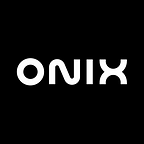Agile vs. Waterfall: Choosing the Right Methodology for Your Project
In project management, the choice between Agile and Waterfall methodologies can significantly impact the success and efficiency of project execution. Each methodology has its distinct characteristics, advantages, and ideal use cases, making the decision critical for aligning with project goals, team dynamics, and client expectations. This article explores the fundamental differences between Agile and Waterfall methodologies, helping you determine the best fit for your project.
Understanding Waterfall
Waterfall is a linear and sequential approach to project management and software development. It is characterized by a structured process where each phase of the project must be completed before the next begins, and there is little to no overlap between stages. The main phases include requirements gathering, system design, implementation, testing, deployment, and maintenance.
Advantages:
Predictability: Waterfall provides a clear, fixed schedule and budget, making it easier to estimate timelines and resources.
Simplicity: Waterfall’s straightforward, sequential nature makes it easy to understand and manage, especially for projects with well-defined requirements that are unlikely to change.
Documentation: This methodology emphasizes thorough documentation at each stage, ensuring that every detail is recorded and traceable.
Disadvantages:
Inflexibility: Once a stage is completed, revisiting or altering it can be difficult and costly.
Risk and uncertainty: Risks may only be discovered during the testing phase, as there is minimal client or stakeholder involvement during development.
Delayed delivery: The final product is only seen at the end of the project, which can lead to a mismatch between the delivered system and the client’s current needs.
Exploring Agile
Agile, on the other hand, is an iterative and incremental approach to project management and software development. It focuses on flexibility, continuous improvement, and the delivery of high-quality working software through collaborative efforts of self-organizing cross-functional teams. Agile splits the project into small, manageable units known as sprints, with deliverables reviewed and adapted at the end of each sprint.
Advantages:
Flexibility: Agile allows for changes in project scope and requirements, adapting to evolving client needs and market conditions.
Client involvement: Regular feedback from clients and stakeholders is encouraged, enhancing satisfaction and relevance of the final product.
Risk management: Frequent iterations and testing reduce risks and allow issues to be addressed early in the process.
Disadvantages:
Less predictability: Budgets and timelines may be harder to estimate due to the fluid nature of Agile.
Requires more commitment: The methodology demands significant client involvement and rapid decision-making, which can be challenging for some stakeholders.
Resource demands: Agile can require more resources than Waterfall, as it may involve frequent meetings and revisions.
Choosing the Right Methodology
When deciding between Agile and Waterfall, consider the following aspects:
Project Requirements: If your requirements are precise and unlikely to change, Waterfall might be more suitable. Agile is better for projects where requirements are expected to evolve.
Client Engagement: Choose Agile if the project requires frequent client interaction and feedback. Waterfall works well when client involvement can be limited to the beginning and end of the project.
Risk Tolerance: Agile mitigates risks effectively through its iterative nature, making it ideal for high-risk projects. Waterfall may be appropriate for projects with lower risk where predictability is valued.
Team Organization: Agile requires collaborative, self-organized, and adaptive teams. Waterfall can be more suitable for teams with clear directives and structured environments.
Conclusion
Both Agile and Waterfall have strengths and weaknesses, and the choice largely depends on your project’s specific circumstances. By understanding the fundamental differences and evaluating your project’s needs, client involvement, and risk factors, you can select the methodology that ensures the best outcome for your project. Whether you choose Agile or Waterfall, the goal is to facilitate a smooth project flow and deliver value efficiently and effectively.
